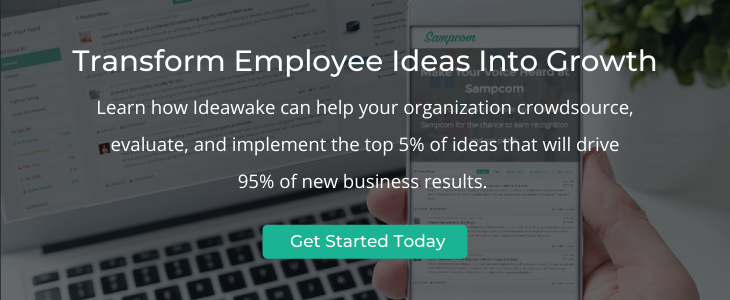Employees tend to stick with what they know. It’s not a bad thing necessarily—people are motivated to perform their role per its original description, but they may feel wary of doing work more in-line with someone else’s role. It’s a combination of not wanting to step on anyone’s toes and wanting to hone their skills for their immediate role.
It’s also a catch-twenty-two: As an organization leader, you want all employees to feel confident about their respective responsibilities, but you also want them to pick up skills outside their roles. Those employees who are able to do both are either highly experienced or are already in roles that allow them to see their organization from a widescreen perspective.
Why is that the case? Shouldn’t all employees, especially those on the front lines, be familiar with every type of customer the company serves, whether they interact with them directly or not? It can be time consuming and seem ineffective for certain departments, but the rewards your company can reap from more consumer-oriented employees are plenty.
Here are some ways you can help your employees can overcome their biases—that is, seeing company-wide issues through more than their immediate role—and operate through a panoramic lens.
Reiterate customer types through personas
No matter what industry you’re in, your primary goal is to serve customers. Whether you’re B2C or B2B, you have people counting on you, your team, and your product.
Employees, especially those who work behind-the-scenes and don’t come in direct contact with customers often (or at all), should be re-familiarized with their company’s primary customer demographics. Even those front-line employees, those coming in frequent or constant contact with customers, can benefit from reorienting themselves around customer values.
Customer personas are a staple for any marketing department, but they provide a lot of insight into different customers’ values, frustrations, and habits. Employees can take that info in and help their customers more efficiently—potentially even preemptively answering questions. Personas allow employees to see a wider range of customer issues than they usually do.
Employees interacting with one consumer demographic can experience working bias. In other words, they assume that the issues they see from customers are the primary issues all of the organization’s customers deal with. It’s a case of genuine lack of insight that organization leaders should evaluate in all steps of the employee process: hiring, onboarding, and ongoing success.
Hire for customer orientation
As Dennis Lee Yohn put for for the Harvard Business Review, “organizations should make thinking about customers and their needs a clear priority.” That’s an obvious first step when hiring for largely customer-facing roles, but how can organizations apply that hiring process for behind-the-scenes roles?
One such way includes assigning customer-oriented tasks, either on occasion or consistently, to behind-the-scenes employees. They’ll gain new insight into how other employees’ work affects customers, as well as how their primary role fits into the customer experience. It will require time and additional training, but the rewards are worth it.
Encourage collaboration between departments
Your front-line employees know the types of issues customers deal with. Even if it’s only their responsibility to direct them to employees that can successfully help with their issues, they understand those particular sets of problems.
Interdepartmental collaboration is a powerful tool for helping employees see issues from multiple angles. A good example for customer-oriented operations, even though it’s indirect, is your company’s website. The IT department helps maintain your company’s website, but your marketing department knows which features work perform well and which underperform.
Just as backstage employees can learn from those front-and-center, employees can learn a lot from outside their department.
Hear employees out to hear customers out
Customers know what they want and what they’re missing from certain companies. Your employees have insight into what exactly those customers have mentioned they want and are missing. By that logic, hearing your employees’ ideas on how to address those customers’ issues can be invaluable.
Crowdsourcing employee ideas will help your organization’s leaders get actionable advice from within your walls. Employees can share their customer experiences with other employees and management in a clear and engaging forum, allowing your organization to effectively and efficiently put customers first.


